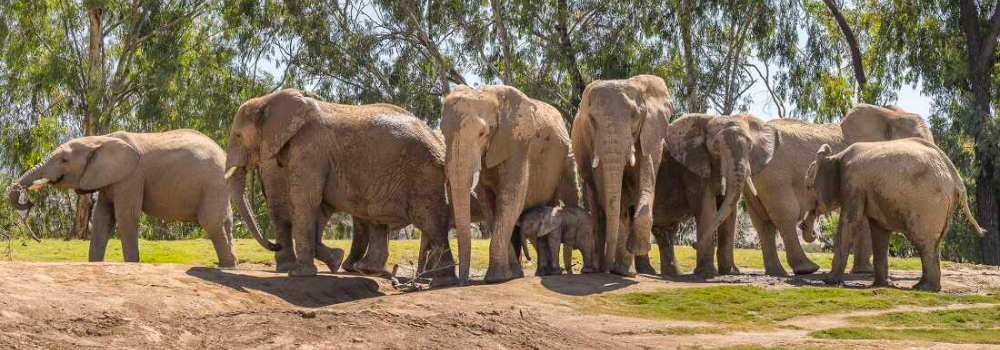 Elephants at the San Diego Zoo Safari Park in Escondido, California. Source: Ken Bohn/San Diego Zoo Safari Park
Elephants at the San Diego Zoo Safari Park in Escondido, California. Source: Ken Bohn/San Diego Zoo Safari Park
In April, a small group of elephants captured the national imagination.
When a 5.2 magnitude earthquake rattled San Diego, three adult female elephants at the local zoo scanned their surroundings and quickly formed a tight ring around two young elephants. They stayed there, locked in what’s called an alert circle, until the shaking subsided. It was beautiful.
Elephants obviously have a strong instinct to protect one another in the face of grave danger. People are like that, too.
More than 70 years of research on human behavior in disaster shows that people are highly adaptive and deeply altruistic in the face of extreme events. We shield one another from storms. We rescue fellow survivors from floodwaters. We pull victims from the rubble.
This is what we do in times of disaster.
Humans, unlike elephants, also have the capacity to take action to protect vulnerable community members well before disaster strikes. While many of our systems to mitigate harm have been hobbled by recent cuts, there are still simple actions we can all take to create circles of care around those who are most at risk to disaster.
Studies have repeatedly shown that older adults, children, people with disabilities, people of color, and people living in poverty have fewer resources to get ready for and respond to disaster. This is why they so often suffer higher rates of injury, death, displacement, and chronic disruption.
In response to this evidence, emergency management systems have evolved to address the specific needs of socially and economically marginalized people. Local agencies and nonprofit organizations have developed robust planning guidance and toolkits to ensure that no one is left behind in disaster. Community-led mitigation efforts have targeted resources to strengthen infrastructure in places with high numbers of vulnerable people, such as schools and healthcare facilities. Federal agencies have hired staff members with expertise and a passion to protect those at greater risk. For example, the Centers for Disease Control and Prevention has invested in pediatric disaster preparedness and the Federal Emergency Management Agency has an office dedicated to disability integration and coordination. The talented public servants who do this work have collaborated with numerous state and local partners to strengthen the capacity of people who need extra support during times of disaster.
Now, though, many of the emergency management professionals engaged in these efforts have been fired or encouraged to retire. Others have chosen to leave as lifesaving preparedness and mitigation programs have been dismantled or are in danger of being eliminated.
In the face of these changes that threaten the public good, we must not despair. Instead, we can follow the lead of the elephants and circle around those at risk in our own communities.
Scan the environment. Elephants can sense seismic vibrations, warning them that an earthquake is imminent. People, however, must take steps to identify when the systems that protect people are on shaky ground. You could start by visiting your local emergency management website to learn about disaster planning and mitigation in your area. Join your community emergency response team so you can find out what systems are in place and you can be prepared to help. Volunteer for your local school safety committee. The key is to act and be informed about what type of preparation is—or is not—happening where you live, work, or go to school.
Band together. Find others who share your commitment to the safety and well-being of people—including those who are most often overlooked—in your community. Listen to others to understand their needs and concerns. Share your hazards knowledge. Find ways to collaborate and prepare together for the good of yourself and others. There is strength in numbers and, as the elephants so clearly showed us, banding together can protect those at greater risk of harm.
Stay alert. After the main shock ended, news reports indicated that the three female elephants remained close to the two juvenile elephants in their care. When an aftershock came, they were ready, and they formed another alert circle. We too must stay alert to existing and burgeoning threats and ready ourselves to respond on behalf of others. Given the uncertain and rapidly shifting landscape in which we are operating, it is necessary that we stay attuned and advocate for what we know works to reduce disaster losses.
The elephants offered a poignant reminder of how important it is to stand for the most vulnerable and to protect the next generation. As disasters continue to threaten people’s lives, we would do well to follow in their large footsteps.
Please take care of yourself and others.
Lori Peek, Director
Natural Hazards Center